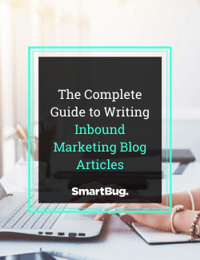
By Ale Melara
Artificial intelligence (AI) has revolutionized many industries, and the field of content creation is no exception. With AI-powered copywriting tools becoming increasingly prevalent, businesses are exploring new ways to leverage this technology to streamline their content creation processes and improve messaging consistency.
However, like any other technology, AI copywriting has benefits and limitations that you need to understand before you decide whether it's a viable option for your business needs. In this blog article, we'll explore the benefits and limitations of AI copywriting and how different lines of businesses are using AI for content creation in order to maximize its benefits.
Benefits of AI Copywriting
AI copywriting can help reduce production costs and time spent on content creation by automating repetitive processes, such as grammar checks and keyword optimization. AI tools can also provide valuable insights into user behavior to further inform content strategies.
- Increased efficiency and speed in content creation: One of the most significant advantages of using AI-powered copywriting tools is the ability to generate large volumes of content quickly and efficiently. These tools can analyze data, identify patterns, and generate relevant text at lightning-fast speeds.
- Improved consistency in messaging: Another benefit of using AI-powered copywriting tools is that they can ensure messaging consistency across various channels. By analyzing large amounts of data, these tools can create consistent messaging that targets specific audiences with precision.
- Ability to generate personalized content at scale: Personalization has become an essential aspect of modern marketing strategies. With AI-powered copywriting tools, businesses can generate personalized messages based on consumer data at scale.
- Cost savings for businesses: Using AI-powered copywriting tools can save businesses time and money by automating repetitive tasks such as writing social media posts or generating product descriptions.
Limitations of AI Copywriting
AI copywriting can help businesses streamline their content creation processes. However, it also has its limitations, which need to be understood before deciding whether AI-powered copywriting is the right fit for your business needs. Let's take a look at some of these:
- Limited creativity and inability to think outside the box: AI-powered copywriting tools can generate formulaic or straightforward content, but they struggle to come up with original ideas or think outside the box
- Lack of emotional intelligence and humanity: Effective communication requires more than just stringing words together; it also involves effectively conveying emotion and tone. Currently, most AI-powered copywriting tools lack this capability.
- Difficulty handling complex or nuanced topics: When it comes to complex topics such as legal or financial matters, AI-powered copywriting tools may not be able to provide accurate or nuanced information because of their limited understanding of context.
- Risk of producing generic or formulaic content: The use of AI-powered copywriting tools may lead to the production of generic or formulaic content that fails to engage readers on a deeper level.
How Different Businesses Leverage AI for Content Creation
Businesses are leveraging AI for various marketing lines in order to maximize efficiency and save time and money.
For example, e-commerce websites may use AI tools to analyze customer data, then use that information to have AI generate product descriptions to create personalized messages that target specific customers based on the analysis. Similarly, AI can be used to generate social media posts for multiple platforms, which can speed up the production process while ensuring accuracy in messaging consistency across those social channels.
Furthermore, businesses may use AI for bigger tasks such as quickly processing and analyzing large amounts of data—although, as noted above, human analysis and interpretation remain crucial because AI tools can’t understand the complexity of these contexts.
Here are a few other examples of uses of AI across industries:
- Social media marketing: Marketers are using AI-generated ad headlines and descriptions for social media campaigns.
- Journalism: News outlets are using automated news writing systems powered by natural language processing (NLP) algorithms.
- E-commerce: Retailers are using chatbots powered by NLP algorithms for customer service inquiries.
- Content marketing: Companies are using machine learning-based platforms that analyze user behavior patterns and suggest topic ideas based on those insights.
Best Practices to Maximize AI for Content Creation
To make the most out of your investment in an AI-powered copywriting tool, keep in mind these best practices:
- Consider factors such as ease of use, customization options, and integration capabilities before selecting an AI tool.
- Set clear goals for what you want your tool to achieve while keeping realistic expectations about its capabilities.
- Ensure a balance between automation and human input; incorporate feedback from humans into the process.
- Use A/B testing and analytics tracking to measure performance over time
- Regularly update your tool's training data sets to ensure they remain relevant and effective.
Conclusion
AI-driven technologies continue to evolve rapidly across various industries worldwide, changing how we work and live our lives every day. Though there are limitations associated with utilizing artificial intelligence in writing projects today (such as limited creativity), the benefits offer many exciting opportunities that marketers should explore further.
Ideally, you’ll want to work with content marketers who are comfortable exploring AI’s capabilities but who also understand the value and talent only human creatives can offer. By implementing best practices when working with these innovative solutions, companies can leverage all available resources efficiently while staying competitive within their respective markets.

About the author
Ale Melara is a Sr. Content Marketing Manager based out of El Salvador, Central America. Ale is our very first LATAM employee. She's worked remotely for the past 5 years and she's had different roles in sales and marketing. In her free time, she works on creating educational videos around digital marketing for her "Inbound Nomad" social accounts where she promotes traveling the world while being a full-time marketer. Read more articles by Ale Melara.








